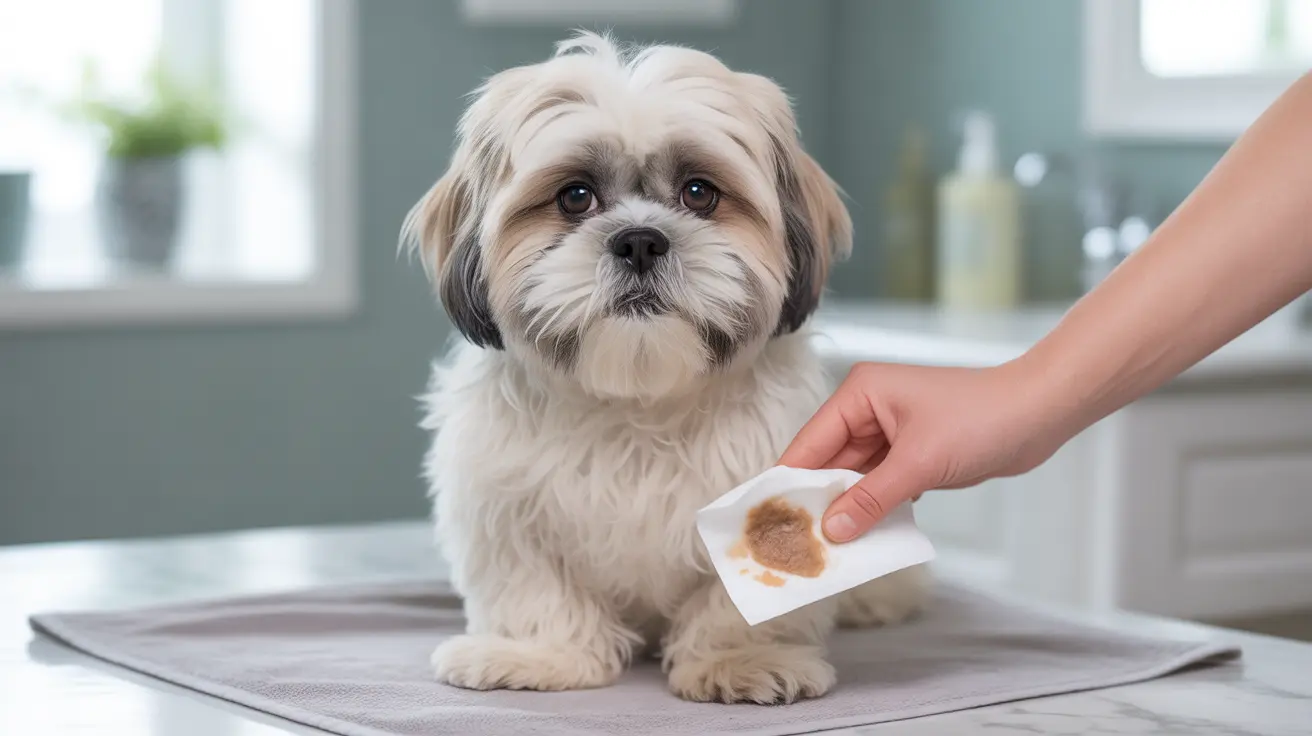When your dog experiences hard stool stuck to their anus, it can be both uncomfortable for them and concerning for you as a pet owner. This common but delicate issue requires careful handling and proper techniques to ensure your pet's comfort and safety. In this comprehensive guide, we'll explore effective methods for removing stuck stool, preventive measures, and when to seek professional help.
Understanding how to address this situation properly is crucial, as improper handling can lead to injury or infection. Let's dive into the safe, veterinarian-approved methods for managing this sensitive problem while maintaining your dog's dignity and well-being.
Safe Removal Techniques for Stuck Stool
Initial Assessment and Preparation
Before attempting any removal, gather necessary supplies: disposable gloves, pet-safe wipes, and lukewarm water. Examine the area carefully to determine the extent of the problem and ensure your dog is calm and cooperative.
Gentle Cleaning Methods
Start with the least invasive approach using pet-safe wipes or a warm, damp cloth to soften the stuck stool. Gently wipe from front to back, being careful not to pull or cause discomfort. For longer-haired dogs, use a fine-toothed comb to carefully separate any matted fur.
Effective Home Remedies and Solutions
Bathing Techniques
If initial cleaning attempts aren't successful, a warm bath can help. Use lukewarm water and pet-specific shampoo to soften the hardened stool. Allow your dog to soak for several minutes, then gently clean the affected area. Always dry thoroughly afterward to prevent skin irritation.
Preventive Grooming
Consider maintaining a "sanitary trim" around your dog's anal area, especially for long-haired breeds. This helps prevent future incidents and makes cleanup easier when accidents occur.
Diet and Prevention Strategies
Dietary Adjustments
To prevent future occurrences, focus on dietary modifications that promote healthy bowel movements:
- Add fiber-rich foods like plain pumpkin puree
- Ensure adequate water intake
- Consider adding probiotics to support digestive health
- Monitor portion sizes and meal timing
Lifestyle Changes
Regular exercise and consistent bathroom schedules help maintain healthy bowel movements. Daily walks stimulate natural elimination and reduce the likelihood of constipation.
When to Seek Veterinary Care
While many cases can be handled at home, certain situations require professional attention:
- Persistent constipation lasting more than 48 hours
- Signs of pain or distress
- Blood in the stool
- Frequent recurrence of the problem
- Visible anal gland issues
Frequently Asked Questions
How can I safely remove hard poop stuck to my dog's anus at home?
Use disposable gloves and pet-safe wipes to gently clean the area. If necessary, soften the stool with warm water and carefully remove it using a damp cloth. Never pull forcefully or use scissors.
What home remedies help soften hard stools to prevent them from sticking to my dog's fur?
Adding fiber-rich foods like pumpkin puree to your dog's diet, ensuring adequate hydration, and including probiotics can help maintain softer, more manageable stools.
Which dietary changes can help reduce constipation and hard stool buildup around my dog's anus?
Increase fiber intake through vegetables and supplements, ensure plenty of fresh water is available, and consider switching to moisture-rich food options when appropriate.
When should I stop home treatments and take my dog to the vet for stuck poop or anal issues?
Seek veterinary care if the problem persists after 48 hours, if your dog shows signs of pain or distress, or if you notice blood, swelling, or unusual discharge.
How can regular grooming and hygiene prevent hard stool matting around a dog's anus?
Maintain regular grooming schedules, keep the anal area trimmed, and clean the area after bowel movements. Regular baths and sanitary trims can significantly reduce the risk of matting.
Remember, maintaining your dog's hygiene and addressing these issues promptly helps prevent complications and ensures your pet's comfort and health. When in doubt, always consult with your veterinarian for personalized advice and treatment options.






